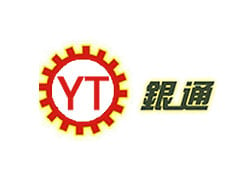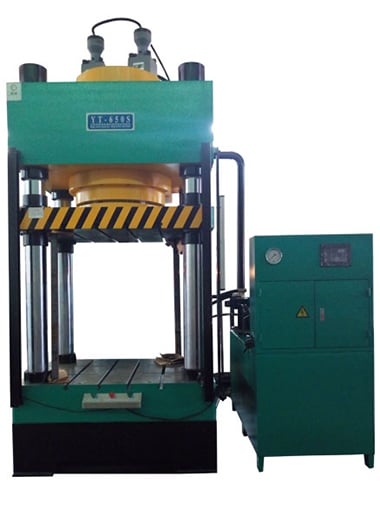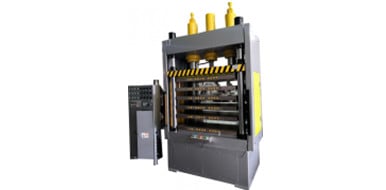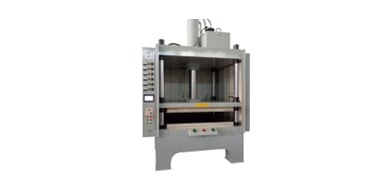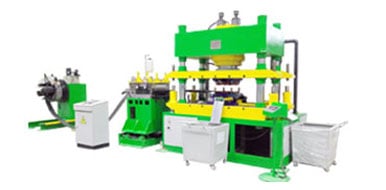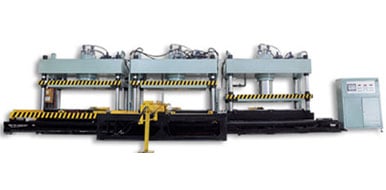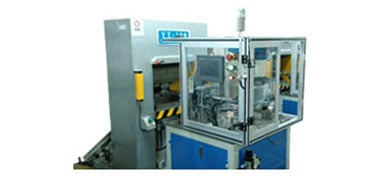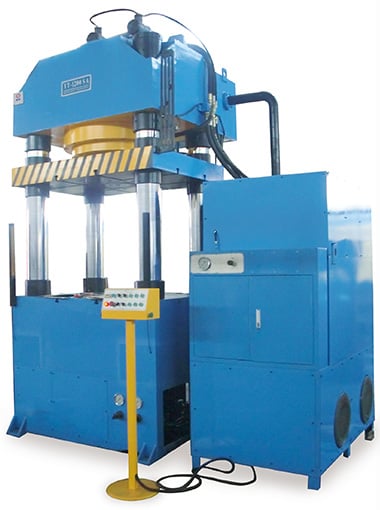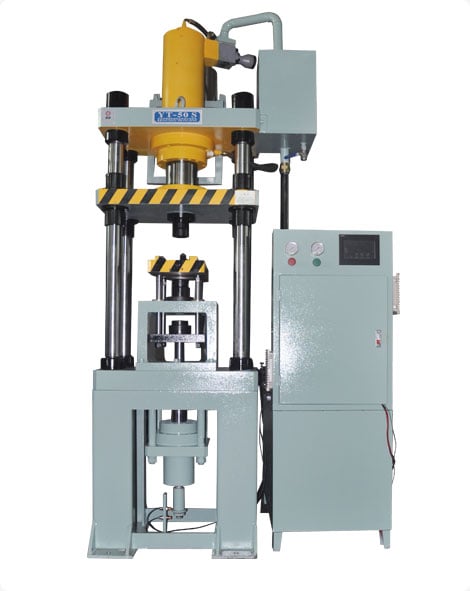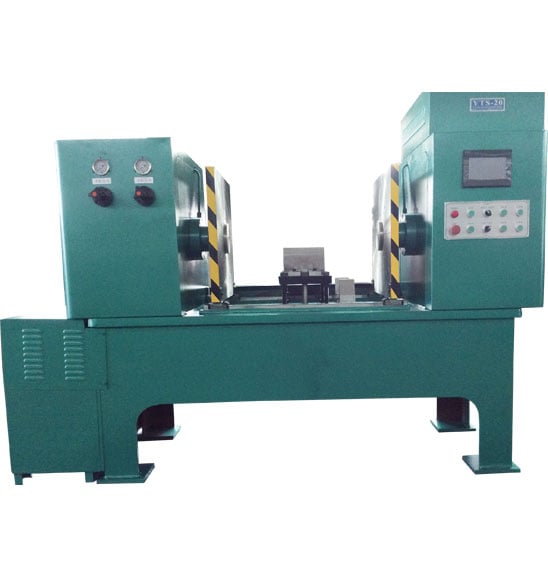How Much Does a Hydraulic Press Cost?
time:2023-07-31 views:(点击 1,007 次)Hydraulic presses can be invaluable tools when it comes to stamping metal, shaping rubber and carving wood - but before making your purchase decision it is essential that due diligence be conducted prior to making such an investment.
Understanding how much a hydraulic press costs is key in selecting an appropriate machine for your business. Here, we explore pricing details of various sizes and brands of hydraulic presses.
Cost of the Press
Hydraulic presses utilize hydraulic pressure applied via a hydraulic cylinder to generate extreme force on materials for bending, straightening, flattening, shaping, compressing, pulling, lifting and pulling applications. They're often used with metal but may be suitable for a variety of other projects too.
There are various kinds of hydraulic press machines on the market today, each offering unique features and prices. A basic H-frame workshop press is great for smaller projects at around $120 to $450 and can create up to 20,000 pounds of pressure; making this press suitable for tasks such as removing bushings and bearings, pressing U-joints or similar.
For larger projects, a larger hydraulic press may be needed. A 250-ton model costs between $40,000 and $60,000. These machines are specifically designed for industrial-scale jobs that require large amounts of force; an even higher capacity model (400 tons) is also available and has greater capabilities.
A 5000-ton hydraulic press is an ideal machine for large industrial uses and can cost millions. Used to shape metal components for ships or other large structures, these massive machines make the perfect shaping tools.
Price for hydraulic presses depends on their tonnage, brand and features. A hydraulic press can be an invaluable asset in your workshop; however, it is crucial that you select a model with appropriate features like stroke depth accuracy and pressing zone.
Your hydraulic press comes equipped with various accessories and parts available for purchase, such as a max pressure gauge to track how much pressure can be handled by it, as well as pressure relief valves to provide safety.
Hydraulic presses are essential tools in any workshop and can be used for various projects, from stamping metal and rubber forms, flattening objects or compressing objects into sheets of metal or rubber, stamping metal to stamping out products - they all use hydraulic pressure! With some research you should find the appropriate hydraulic press that suits both your needs and budget.
Cost of the Parts
Costing of a hydraulic press depends not only on its type and size but also on any necessary parts that may be necessary. For instance, when shaping metal using your press you will require a die or punch that matches up with your workpiece as well as mandrel for the ram, cylinder piston rod, pressure plates and control panel; all of which add up quickly over time if used frequently.
If you need help selecting the appropriate parts for your task, speak with a professional or an experienced user for advice. They will also be able to recommend materials suitable for the particular project at hand as well as hydraulic presses that meet both budget requirements and personal preferences.
There are various hydraulic presses for sale, from small lightweight models to larger heavy-duty units. These versatile machines are great for stamping metal components or forming rubber components - ideal applications include stamping metal stamping automotive manufacturers or agriculturalists alike.
Hydraulic presses offer multiple advantages over other press machines, including improved worker safety. Equipped with safety features that protect workers from injuries - like relief valves that prevent overloading of tools - hydraulic presses also tend to be much less costly to run than their counterparts and make an ideal option for businesses on tight budgets.
Many active press manufacturing companies provide press repair kits to maintain the operation of their machines, at relatively low costs. You can purchase such kits online retailers such as Kiefer Tool. Furthermore, these same companies also provide custom manufacturing services if a replacement part cannot be obtained directly from its original manufacturer - Kiefer Tool offers such custom parts production with precision specifications for example.
Cost of the Installation
Hydraulic presses are ubiquitous in workshops and factories alike, providing numerous uses across industries. Not all presses are created equal though; to select an effective hydraulic press for purchase it's essential to understand their operation as well as their suitable uses for you before investing in one. There are a few key considerations when buying one such as ideal usage, pricing, and the various types available - making sure that you make an informed decision can make or break an investment decision.
A hydraulic press is a machine that uses compressed fluid to create immense force. Consisting of two interconnected cylinders, one larger than the other, when activated by its pump oil is pressurized into one cylinder which in turn pushes against another smaller cylinder known as "Plunger," creating enormous pressure to crush whatever item lies between Plunger and Ram.
A hydraulic press can be used for various tasks, including forming metal and shaping wood, stamping metal and stamping other materials, and stamping them out. It will depend on what material and size of item is being formed as to which type of hydraulic press works best; depending on your individual requirements you may require either manual or automatic hydraulic presses.
Hydraulic presses come in all sizes, from small to large. Prices for smaller machines start as little as several thousand dollars while larger models often exceed millions due to their impressive power and performance capabilities.
When purchasing a hydraulic press, it is crucial to take note of its bed size. A press bed serves as the surface where its bolster rests; typically made of metal and can vary in thickness; some beds may be larger than others depending on your desired application.
Purchasing a hydraulic press requires taking into account maintenance costs as well. For instance, worn out or damaged pistons and cylinders need to be replaced, while improper maintenance of your hydraulic system could cause downtime and decreased productivity. To minimize such expenses and ensure safe operations and production costs are minimized by investing in quality cylinder seals for hydraulic systems and press machines. This ensures your press operates safely and efficiently reducing downtime and production expenses.
Cost of the Training
A hydraulic press utilizes a hydraulic cylinder to produce compressive force. Its main application lies in flattening steel metal sheets, forming metal, punching through holes in metal panels and straightening. Furthermore, this machine can also be used in cutting, molding and assembling materials as its power is determined by Pascal's law as it works alongside pressure of fluid within its cylinder to generate compressive force.
There are various kinds of hydraulic presses on the market, each offering different benefits and drawbacks. When selecting a model, size and tonnage should be key factors when making a choice; additionally, consider what material will be pressed before making your selection; rubber pressing machines tend to be cheaper than metal presses but don't offer as high an accuracy level.
Cost of hydraulic presses depends on their size and quality. Smaller presses typically range from $10,000 to $30,000. They're suitable for stamping, bending and assembly tasks in smaller industries; larger models, however, cost more as they're designed for heavier-duty uses.
Hydraulic presses tend to be more cost-effective than comparable mechanical presses in terms of cost and maintenance costs, since they feature few moving parts lubricated continuously by an oil stream, thus reducing maintenance expenses and making operation simpler and more accurate.
Price for hydraulic presses can depend on their tonnage and size; for instance, 200-ton presses are often utilized by larger manufacturing industries for heavy-duty work that requires greater accuracy and precision than lower capacity presses can offer. These higher capacity presses may cost more, yet offer superior accuracy and precision than their lower capacity counterparts.
Training and certification requirements when selecting a hydraulic press should be an important factor when selecting a model. Without adequate instruction, an untrained operator could put themselves or the machine at risk, leading to injury or damage that needs repairs later on. Furthermore, training ensures they understand proper safety precautions to prevent accidents from happening.
Link to this article: https://www.ihydraulicpress.com/nsn/4170.html
Hot Articles
-
How Much Pressure Should a Hydraulic Press Have?
Hydraulic presses rely on Pascal’s law to effectively harness large amounts of force over short distances. They utilize two components ̵……
-
How Much Does a Hydraulic Press Cost?
Hydraulic presses utilize Pascal’s Law to generate force from exerting pressure on confined fluid. It’s an efficient method that can b……
-
How to Make a Tabletop Hydraulic Press
There is an assortment of hydraulic press machines on the market, ranging from table top models to massive presses with hundreds of tons of pressu……
-
How Much Money Does the Hydraulic Press Channel Make?
Lauri Vuohensilta and Anni first posted videos online showing them crushing objects with their factory’s 150-ton hydraulic press in 2015. So……
-
How to Make a Hydraulic Bearing Press
Hydraulic presses offer the added flexibility of applying full pressure throughout their stroke, making them an excellent choice for applications ……
-
How to Make a Hydraulic Press at Home
If you need to apply substantial pressure to materials, a hydraulic press can help. DIY-ers can make one at home easily – with no preliminary ……
-
Hydraulic Press Channel – How Much Does Hydraulic Press Channel Make?
The Hydraulic Press Channel on YouTube features Lauri Vuohensilta using his family’s hydraulic press to crush various objects, with one vide……
-
How Much Does a Hydraulic Press Cost?
No matter if you’re an independent worker or large-scale manufacturer, hydraulic presses can be invaluable to production equipment. Before pur……
Latest News
-
How to Make a Powerful Hydraulic Press With Syringes
Hydraulic presses are powerful tools, capable of crushing anything from fruit to dynamite or diamonds with precise force and ease. Their straightfor……
-
How Much Force Can a Hydraulic Press Generate?
Hydraulic presses have many industrial uses, from metalworking to woodwork. Since they generate enormous force, hydraulic presses make a perfect t……
-
How to Make Hydraulic Press Plates
Hydraulic press machines are industrial devices that employ extreme amounts of pressure to crush, straighten and mould materials. They can also be u……
-
Can You Make a Manual Press Into a Hydraulic Press?
Hydraulic presses can do all sorts of amazing things for metalworkers. From forging and extrusion to pressing bearings onto shafts and reshaping c……
-
How to Make a Hydraulic Forging Press
Forging is the process of shaping metal with mechanical or hydraulic force. While some forging machines use mechanical pressure, others utilize hy……
-
How Much Is a Hydraulic Press?
Hydraulic presses are versatile machines that can benefit both independent workers and larger manufacturers, as they’re relatively cost-effe……
-
How to Make a Hydraulic Press
Hydraulic presses can make work simpler and cheaper, yet purchasing or building one yourself may be expensive or challenging. Create your own hydrau……
-
How to Make a Tabletop Hydraulic Press
There is an assortment of power presses to meet every imaginable need, ranging from tabletop hydraulic models for laboratories to massive ones that ……
